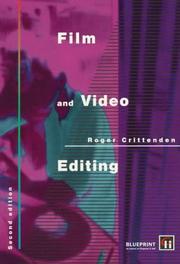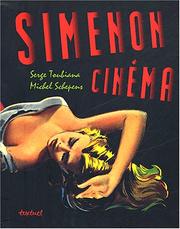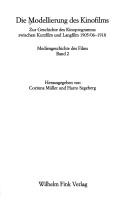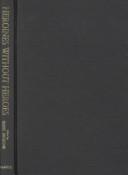| Listing 1 - 10 of 408 | << page >> |
Sort by
|
Book
ISBN: 2753577471 2753574456 Year: 2018 Publisher: [s.l.] : Presses universitaires de Rennes,
Abstract | Keywords | Export | Availability | Bookmark
 Loading...
Loading...Choose an application
- Reference Manager
- EndNote
- RefWorks (Direct export to RefWorks)
Du cinéma qui naît à la fin du XIX? siècle à celui qui s'expose aujourd'hui au musée s'est jouée une histoire en trois temps, dont chacun est venu décrire un usage théorique et social du signifiant « cinéma ». Le premier consacre un appareil d'enregistrement et de projection des images en mouvement qui, parmi d'autres, a réussi à imposer un modèle technique et industriel de production des films. Point d'arrivée d'une culture visuelle façonnée par les panoramas, la photographie, le chemin de fer, la lanterne magique et les jouets optiques, le cinématographe consigne une vaste iconographie documentaire avant de s'ouvrir aux formes divertissantes du spectacle. C'est le moment Lumière. Pourtant, dès le début des années 1910, ce premier moment historique est contrarié par une demande d'art qui va profondément modifier son profil culturel et social.

ISBN: 3920889053 Year: 1973 Publisher: Berlin Spiess
Abstract | Keywords | Export | Availability | Bookmark
 Loading...
Loading...Choose an application
- Reference Manager
- EndNote
- RefWorks (Direct export to RefWorks)
791.43 --- Filmkunst. Films. Cinema --- 791.43 Filmkunst. Films. Cinema
Book
ISBN: 9032806815 Year: 1988 Publisher: Haarlem Rostrum
Abstract | Keywords | Export | Availability | Bookmark
 Loading...
Loading...Choose an application
- Reference Manager
- EndNote
- RefWorks (Direct export to RefWorks)
791.43 --- Filmkunst. Films. Cinema --- 791.43 Filmkunst. Films. Cinema

ISBN: 1857130111 Year: 1995 Publisher: London Blueprint
Abstract | Keywords | Export | Availability | Bookmark
 Loading...
Loading...Choose an application
- Reference Manager
- EndNote
- RefWorks (Direct export to RefWorks)
791.43 --- 791.43 Filmkunst. Films. Cinema --- Filmkunst. Films. Cinema

ISBN: 2845970617 Year: 2002 Publisher: Paris : Textuel,
Abstract | Keywords | Export | Availability | Bookmark
 Loading...
Loading...Choose an application
- Reference Manager
- EndNote
- RefWorks (Direct export to RefWorks)
791.43 --- Filmkunst. Films. Cinema --- 791.43 Filmkunst. Films. Cinema --- Simenon, Georges --- Film and video adaptations

ISBN: 3770533100 Year: 2000 Publisher: München Fink
Abstract | Keywords | Export | Availability | Bookmark
 Loading...
Loading...Choose an application
- Reference Manager
- EndNote
- RefWorks (Direct export to RefWorks)
791.43 --- 791.43 Filmkunst. Films. Cinema --- Filmkunst. Films. Cinema --- Film --- anno 1920-1929 --- Germany
Book
ISBN: 9024221056 Year: 1994 Publisher: Kampen Kok
Abstract | Keywords | Export | Availability | Bookmark
 Loading...
Loading...Choose an application
- Reference Manager
- EndNote
- RefWorks (Direct export to RefWorks)
791.43 --- #gsdbA --- 791.43 Filmkunst. Films. Cinema --- Filmkunst. Films. Cinema --- films --- filmkritiek --- Film

ISBN: 1474287921 9781474287920 9780304702497 147428793X Year: 2016 Publisher: London Bloomsbury Publishing
Abstract | Keywords | Export | Availability | Bookmark
 Loading...
Loading...Choose an application
- Reference Manager
- EndNote
- RefWorks (Direct export to RefWorks)
"This anthology explores a little-examined period of European film history (1945-1951) and places gender at the centre of struggles around national identity. Ulrike Sieglohr compares and contrasts the post-war cinemas of Britain, France, Germany, Italy, and Spain in order to examine how representations of women in this period emerged from specific national contexts. She further analyzes the appeal of particular stars and the political and social conditions that contributed to their popularity."--
Women in motion pictures. --- Motion pictures --- History. --- Films, cinema
Book
Year: 2022 Publisher: State University of New York Press
Abstract | Keywords | Export | Availability | Bookmark
 Loading...
Loading...Choose an application
- Reference Manager
- EndNote
- RefWorks (Direct export to RefWorks)
The White Indians of Mexican Cinema theorizes the development of a unique form of racial masquerade—the representation of Whiteness as Indigeneity—during the Golden Age of Mexican cinema, from the 1930s to the 1950s. Adopting a broad decolonial perspective while remaining grounded in the history of local racial categories, Mónica García Blizzard argues that this trope works to reconcile two divergent discourses about race in postrevolutionary Mexico: the government-sponsored celebration of Indigeneity and mestizaje (or the process of interracial and intercultural mixing), on the one hand, and the idealization of Whiteness, on the other. Close readings of twenty films and primary source material illustrate how Mexican cinema has mediated race, especially in relation to gender, in ways that project national specificity, but also reproduce racist tendencies with respect to beauty, desire, and protagonism that survive to this day. This sweeping survey illuminates how Golden Age films produced diverse, even contradictory messages about the place of Indigeneity in the national culture.This book is freely available in an open access edition thanks to TOME (Toward an Open Monograph Ecosystem)—a collaboration of the Association of American Universities, the Association of University Presses, and the Association of Research Libraries—and the generous support of Emory University and the Andrew W. Mellon Foundation. Learn more at the TOME website, available at: https://www.openmonographs.org/. It can also be found in the SUNY Open Access Repository at: http://hdl.handle.net/20.500.12648/7153
Mexico --- Films, cinema --- Mexico; cinema; golden age --- Motion pictures.
Book
Year: 2020 Publisher: Berlin/Boston De Gruyter
Abstract | Keywords | Export | Availability | Bookmark
 Loading...
Loading...Choose an application
- Reference Manager
- EndNote
- RefWorks (Direct export to RefWorks)
What is the connection between the tempo of audiovisual images and the audience`s emotional experience? Examining the screwball comedy of the 30s and 40s, this study looks at comedy and hilarity as temporal structures. Exchanges of blows, puns, and verbal acrobatics are embedded in a complex composition of voices, facial expressions, gestures, and visual constructions. The audience experiences and enjoys combat and rage as an elegant pas de deux.
Films, cinema --- Film theory & criticism --- Media studies --- Affectivity --- comedy --- temporality
| Listing 1 - 10 of 408 | << page >> |
Sort by
|

 Search
Search Feedback
Feedback About UniCat
About UniCat  Help
Help News
News